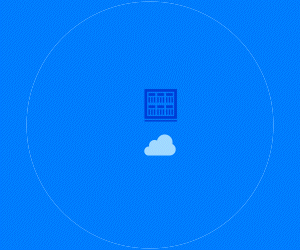Go Beyond Traditional Monitoring with Cross-Stack Observability
Data analytics — the brains behind digital twinning — can also be used to uncover warning signs and predict performance issues in the digital twin environment before they occur.
For instance, to truly test and identify promising technologies, IT teams must ensure the availability and security of sensors, applications, databases, networks and infrastructure, all of which work together to collect and process real-world data and enhance the output of a digital twin. However, this level of cross-stack monitoring is hard to achieve with traditional tools.
The digital twin environment is incredibly complex and interconnected. Single-solution tools can exaggerate work silos, and toolset creep can quickly set in, resulting in insufficient visibility over assets.
To overcome this challenge IT pros need a single-pane-of glass view that provides unified insights across the digital twin ecosystem, enabling staff to maintain system readiness holistically. This is the concept of observability.
Observability is the ability to provide insights, automated analytics and actionable intelligence through the application of cross-domain data correlation, ML and AIOps across massive real-time and historical metrics, logs and trace data.
With observability, teams can focus on key performance issues underpinning the digital twin proving ground without switching from tool to tool or dealing with a telemetry data deluge. Teams can also collaborate to predict bottlenecks, rapidly resolve issues, plan resource capacity or implement an infrastructure change.
MORE FROM FEDTECH: Observability and AIOps help administrators with network disruptions.
Understand How a Digital Twin Affects IT Infrastructure
Observability can also help federal IT professionals evaluate the digital twin environment to better understand its impact on networks, interoperability and the ability to operate under constrained conditions. Analysts can automatically detect, diagnose and resolve issues on any network device linked to the digital twin.
This is important for deriving real-time and predictive insights; a digital twin is dynamically updated with contextual data. Any network problem can delay data delivery across the digital continuum.
Observability gives IT teams the full picture. Teams can visualize the entire environment, from sensor to cloud, to better understand problems and accelerate troubleshooting.
An observability approach can also shine light on the interoperability between the many distributed systems at play in digital twinning, as well as related issues. One of the key advantages of observability is being able to view the service relationships between network resources, microservices, containers, virtual machines and database instances in a unified way.
Without observability and the insights it provides, IT teams may never know a problem exists within the constrained and complex digital twin environment — both in the physical locations where the Air Force executes these tests and in the virtual twin environment. The problem may continue unabated, slowly degrading performance and impacting outcomes.
Air Force technology pros have enough on their hands trying to accelerate technology innovation without worrying about the underlying infrastructure. But with observability, they can ensure a high-performing digital twin environment that is free of bottlenecks and enables the mission of quickly delivering new capabilities to the warfighter.










